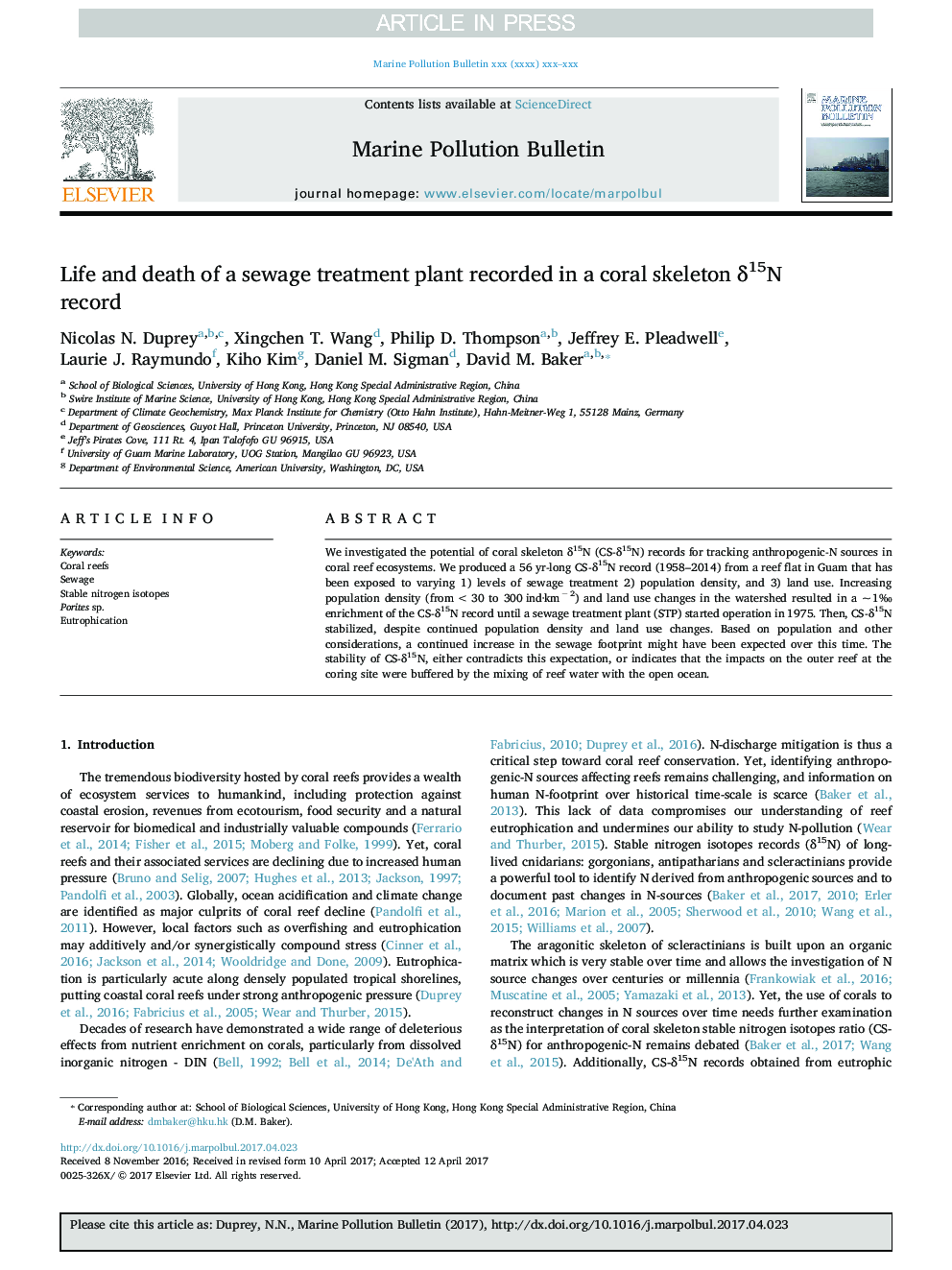| Article ID | Journal | Published Year | Pages | File Type |
|---|---|---|---|---|
| 5757653 | Marine Pollution Bulletin | 2017 | 8 Pages |
Abstract
We investigated the potential of coral skeleton δ15N (CS-δ15N) records for tracking anthropogenic-N sources in coral reef ecosystems. We produced a 56 yr-long CS-δ15N record (1958-2014) from a reef flat in Guam that has been exposed to varying 1) levels of sewage treatment 2) population density, and 3) land use. Increasing population density (from < 30 to 300 ind·kmâ 2) and land use changes in the watershed resulted in a ~ 1â° enrichment of the CS-δ15N record until a sewage treatment plant (STP) started operation in 1975. Then, CS-δ15N stabilized, despite continued population density and land use changes. Based on population and other considerations, a continued increase in the sewage footprint might have been expected over this time. The stability of CS-δ15N, either contradicts this expectation, or indicates that the impacts on the outer reef at the coring site were buffered by the mixing of reef water with the open ocean.
Related Topics
Physical Sciences and Engineering
Earth and Planetary Sciences
Oceanography
Authors
Nicolas N. Duprey, Xingchen T. Wang, Philip D. Thompson, Jeffrey E. Pleadwell, Laurie J. Raymundo, Kiho Kim, Daniel M. Sigman, David M. Baker,
